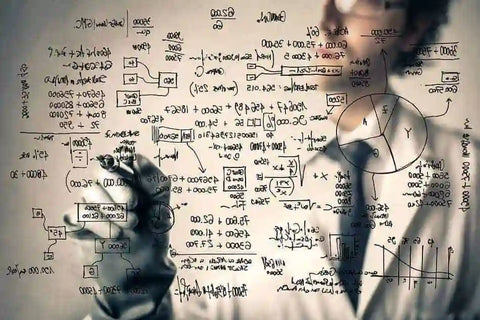Punctuating and Formatting Correctly in Relation to Parentheses
Parentheses (or round brackets) are used with considerable frequency in academic and scientific writing, but the punctuation and formatting that some scholars use in relation to parentheses are inappropriate, inconsistent and sometimes misleading. I am not referring here to specialised uses of parentheses in, for instance, mathematical equations or textual studies, but to the more general use of parentheses in the running text of a wide range of scholarly documents. Effective punctuation and formatting around and within parentheses in this context are, in fact, fairly straightforward, but the presence of the parentheses can confuse matters or make what is correct look awkward or incorrect, so a few basic rules may simplify matters.
Parentheses can be used within parenthetical clauses marked by dashes (en rules and em rules), and dashes can be used within parentheses. ‘Three kinds of birds returned in the spring – robins, chickadees (the smallest) and sparrows – and then left again in the fall’ demonstrates the correct format for the first, and ‘three kinds of birds returned in the spring (robins, chickadees – the smallest – and sparrows) and left again in the fall’ shows correct usage for the second.
A comma or semicolon should precede an opening parenthesis only in a numbered list when the numerals are enclosed in parentheses, as they are in this example: ‘Four conditions were created for the experiment: (1) darkness inside, (2) darkness outside, (3) artificial lighting inside and (4) daylight outside.’ Neither a comma nor a semicolon should ever precede a closing parenthesis. ‘After crawling through the window (on the third floor), she unlocked the door’ demonstrates the correct way to punctuate if a sentence requires a comma immediately after a set of parentheses. ‘After crawling through the window (on the third floor,) she unlocked the door’ is incorrect. In such a construction, the comma properly belongs to the surrounding sentence, not to the parenthetical material, so it should appear after the closing parenthesis.
Full stops as well as question and exclamation marks should be used in the same way, following a closing parenthesis if they belong to the sentence as a whole and preceding a closing parenthesis only if they belong particularly or solely to the parenthetical material. The first situation is demonstrated by ‘I worked for days to polish my thesis, yet my external examiner had the audacity to say something truly insulting (“It doesn’t look like you proofread this at all”)!’ The correct format for the second is shown in ‘It may be November, but it was as warm as summer yesterday (can you believe it?).’ In the case of a full stop, ‘belonging’ to the parenthetical material means that material forms a complete sentence and the parenthetical construction as a whole is separate from other sentences, as the final sentence of this paragraph is. (For this reason, one or more full sentences within parentheses should never be embedded in another sentence.)
In British English, parentheses can be used within parentheses in normal running prose when necessary, as in ‘(34 men (50%) and 34 women (50%)).’ In American English, however, square brackets are generally used within parentheses – ‘(34 men [50%] and 34 women [50%])’ – and, if needed, parentheses are then used within those interior square brackets, square brackets within those parentheses and so on. Whichever form of English you are using, it is usually best to keep double bracketing to a minimum, especially in the main text of a document, where rewording or rearranging parenthetical material to avoid double bracketing is a preferable option. Similarly, it is best if parentheses do not appear back to back, and if they must, that this usage be kept to a minimum as well. Although this principle applies to all brackets in general contexts, some specialised uses (in mathematical and legal contexts for instance) may require a back-to-back format, just as they may require a specific order for the use of brackets.
Why Our Editing and Proofreading Services?
At Proof-Reading-Service.com we offer the highest quality journal article editing, dissertation proofreading and online proofreading services via our large and extremely dedicated team of academic and scientific professionals. All of our proofreaders are native speakers of English who have earned their own postgraduate degrees, and their areas of specialisation cover such a wide range of disciplines that we are able to help our international clientele with research editing to improve and perfect all kinds of academic manuscripts for successful publication. Many of the carefully trained members of our manuscript editing and proofreading team work predominantly on articles intended for publication in scholarly journals, applying painstaking journal editing standards to ensure that the references and formatting used in each paper are in conformity with the journal’s instructions for authors and to correct any grammar, spelling, punctuation or simple typing errors. In this way, we enable our clients to report their research in the clear and accurate ways required to impress acquisitions proofreaders and achieve publication.
Our scientific proofreading services for the authors of a wide variety of scientific journal papers are especially popular, but we also offer manuscript proofreading services and have the experience and expertise to proofread and edit manuscripts in all scholarly disciplines, as well as beyond them. We have team members who specialise in medical proofreading services, and some of our experts dedicate their time exclusively to dissertation proofreading and manuscript proofreading, offering academics the opportunity to improve their use of formatting and language through the most exacting PhD thesis editing and journal article proofreading practices. Whether you are preparing a conference paper for presentation, polishing a progress report to share with colleagues, or facing the daunting task of editing and perfecting any kind of scholarly document for publication, a qualified member of our professional team can provide invaluable assistance and give you greater confidence in your written work.
If you are in the process of preparing an article for an academic or scientific journal, or planning one for the near future, you may well be interested in a new book, Guide to Journal Publication, which is available on our Tips and Advice on Publishing Research in Journals website.








